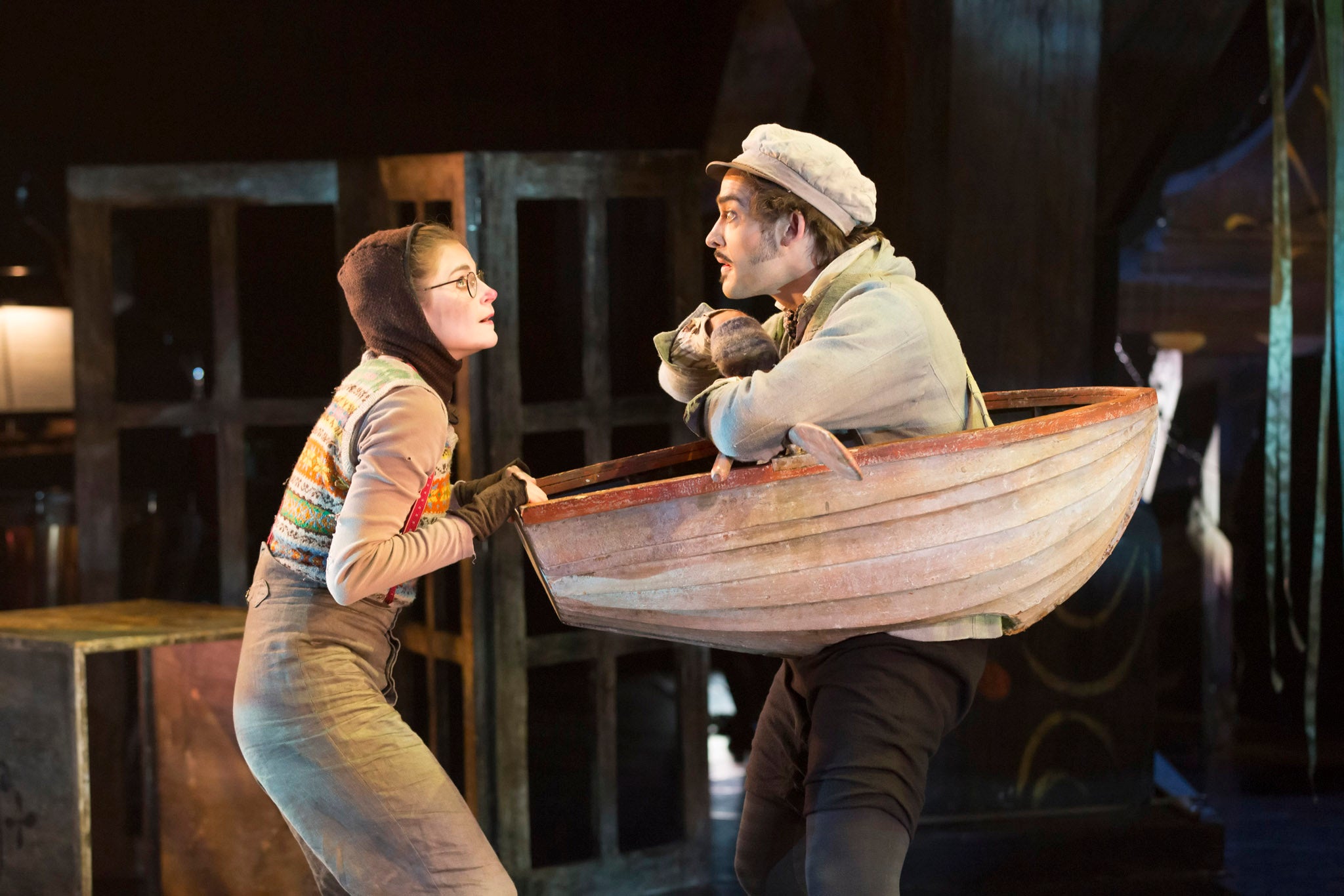The Wind in the Willows, Linbury Studio Theatre, Royal Opera House

Your support helps us to tell the story
From reproductive rights to climate change to Big Tech, The Independent is on the ground when the story is developing. Whether it's investigating the financials of Elon Musk's pro-Trump PAC or producing our latest documentary, 'The A Word', which shines a light on the American women fighting for reproductive rights, we know how important it is to parse out the facts from the messaging.
At such a critical moment in US history, we need reporters on the ground. Your donation allows us to keep sending journalists to speak to both sides of the story.
The Independent is trusted by Americans across the entire political spectrum. And unlike many other quality news outlets, we choose not to lock Americans out of our reporting and analysis with paywalls. We believe quality journalism should be available to everyone, paid for by those who can afford it.
Your support makes all the difference.Will Tuckett’s danced version of Kenneth Grahame’s The Wind in the Willows evokes a tweedy idyll, from woolly ducks to comedy car chases. In 2002, it was the first Christmas show created for the Linbury Studio Theatre. This tenth anniversary revival is the best I’ve seen, danced with particular warmth and energy.
The Brothers Quay design an attic set that rapidly converts into the scenes of the story. A blue silk river unfolds from a wardrobe, while an upturned Windsor chair becomes the bars of Toad’s prison. Lovingly-detailed model boats and motor cars are worn around the performers’ waists, like hobby horses.
Nicky Gillibrand dresses the animals in witty variations on Edwardian country clothes, with additional whiskers. A shaggy astrakhan coat suggests Badger’s pelt, while other animals wear snuggly layers of tweed, corduroy and Fair Isle pullovers. The rabbits have knitted balaclavas with long ear (Badger holds the ears down over one rabbit’s eye as Toad crashes his car in a noisy off-stage collision).
There’s precise characterisation in these costumes. Toad’s green-red checks are as loud as his personality, while his red T-bar sandals suggest a child rather than an adult. The weasels are teddy boys, underlining the stout conservatism of this world and its hierarchies. They’re accompanied by irresistible stoats, rumpled furry puppets who wriggle sinuously out of corners or wait with open-mouthed greed.
Andrew Motion’s narration is the production’s weak spot. It’s far too self-conscious, full of Shakespearean echoes and painstaking rhymes. Due to illness, Tuckett himself stepped in to replace narrator Anthony McGill. He makes an excellent speaker, giving the character a shy but welcoming persona, always ready to catch the eye of the audience or one of the characters. The score, by Martin Ward after George Butterworth, is a very English pastoral.
Will Kemp, Tuckett’s original Ratty, is back for these anniversary performances. He’s hilariously dashing, rowing his boat with a flourish or quirking an eyebrow after fending off weasels with a pistol. He and Clemmie Sveaas’s Mole establish a sweet friendship, though Tuckett gives them too much aimless skipping.
If his production sometimes lags in its happy scenes, Tuckett delivers fine setpieces. The police chase rampages through the foyers in the interval. Carol singers come through the audience to gather on stage under twinkling fairy lights and falling snow. When more snow falls in the auditorium, children in the audience stand up and reach out to catch the snowflakes.
Until 5 January. Box office 020 7304 4000
Join our commenting forum
Join thought-provoking conversations, follow other Independent readers and see their replies
Comments